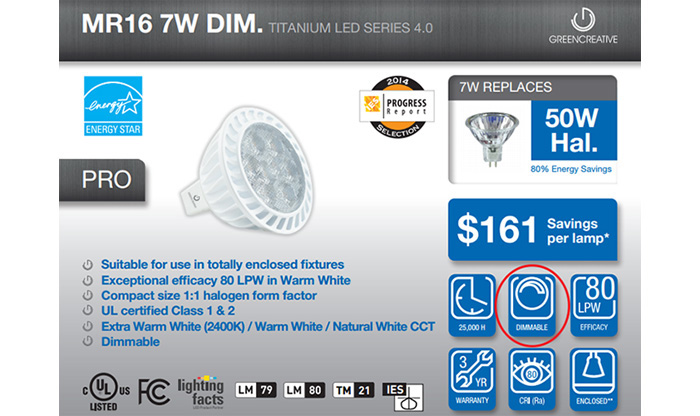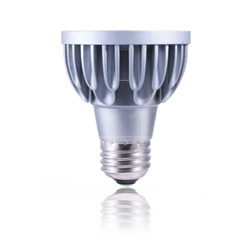-
0
Your CartOrder Subtotal0.00
- 0
Lighting Controls - Dimming

What types of dimmers are available?
Each dimmable fixture has certain technology within it that determines the type of dimmer to use. It’s important that the dimmer matches up to the fixture technology in order for it to work properly (line voltage, low voltage magnetic, low voltage electronic, 0-10V LED, or fluorescent power supplies). Not all bulbs are dimmable, and not all dimmers dim all bulbs. Check the dimmer and fixture/bulb specifications and instructions to know.

Some other key points to keep in mind when selecting a dimmer is how much of a load you will be putting on the dimmer. For example, if you have ten recessed cans that are 50 watts each, you will need at least a 600-watt dimmer to carry that load.
Keep in mind that when you put multiple dimmer switches in the same box, you de-rate the dimmers down. If the dimmer is located on the end of the box, your 600-watt dimmer becomes a 500-watt dimmer. If located in the middle with other devices on either side, a 600-watt dimmer becomes a 400-watt dimmer. You must also consider if the fixtures can be controlled by one or more locations (single pole dimmer or 3-way, etc.).
What are the advantages of using dimmers?
Dimming your lights not only allows you to create the mood and atmosphere of a room but it also saves energy and the lifetime of the bulbs inside the fixture. Having a fixture on a dimmer at its full brightness level saves 4-9% in electricity. Dimming a fixture 20% saves 20% in energy—simple as that!
Can I use a standard 3-way switch with a multi location dimmer?
Unfortunately, it’s not quite that easy. You need to select the compatible 3-way switch that goes with your multi-location dimmer.

Can you use a 3-way dimmer in a single-pole application?
Not exactly. 3-way dimmers are used for top of stairs and bottom of stairs or at two different doors same room. 4-way dimmers go in between 3-way dimmers for a 3rd door.

However, Legrand’s switches do act as both a single pole and 3-way. If using a product like their Paddle switch, for example, you can place that on one end of the switch leg and then use the compatible dimmer on the other end. This doesn’t work with all dimmers and switches, though, so you need to check the specifications to ensure it works properly.
Can I dim LED or fluorescent light bulbs?
Not all LED and CFL bulbs are dimmable; the manufacturer’s specifications for a particular LED or CFL bulb will tell you if it is. Dimmer manufacturers post lists of their compatible dimmers that they have tested to ensure that their dimmer will work with that bulb. Bulb manufacturers also post lists of their own to indicate which dimmers are compatible.
Many light fixtures now have integrated LED light sources, rather than requiring a separate bulb. Check manufacturer specifications to see if the fixture is dimmable and, if so, which dimmers are compatible.
Be aware that while incandescent and halogen lights take on a warmer hue as you dim them, most LED lights stay the same color or take on a cooler hue when you dim them. Special “warm dim” LED lights that mimic the dimming color change of incandescent lights and halogens are becoming more popular.
Examples of recommended LED bulbs and dimmer compatibility charts:
Can I use an incandescent dimmer with low voltage lighting (like halogen and LED)?
If you are dimming a low voltage (12V or 24V) system or fixture you will need to use the appropriate low voltage dimmer (i.e. low voltage electronic or low voltage magnetic). The specifications for the product you are trying to dim will mention what type of power supply is used, and you need to match the dimmer type up to that. Incandescent won’t work on low voltage and vice versa.
What is 0-10V dimming?
0-10V dimming works with a power supply specifically design to accept 0-10V dimming. It dims the low voltage side of the power supply by sending a 0-10 volt signal from the dimmer switch to the power supply and requires two extra low voltage wires going to the dimmer. Normal dimmers send a signal to dim the line voltage (120V) side of the power supply.
Is it normal for my dimmer switch to get warm? Is this safe?
It is normal for a dimmer to get warm to the touch. If it is too hot to touch, something is wrong, and you should call a qualified electrician.
A dimmer has fins (or heat sinks) located on the sides to help dissipate heat out and away from it. But when a dimmer is ganged in a multiple box with other devices, some or all of those fins will be removed, creating less wattage on the dimmer than its initial specification. A 600-watt dimmer may decrease to a 500- or even 400-watt capacity if the fins are removed. Less watts means less heat, so a dimmer that is sitting in a single gang plate may be warmer to touch than one that might be next to other devices.
Can I use dimmers in outdoor settings?
A dimmer should not be directly exposed to exterior elements; however, you can place a UL listed, outdoor-rated wall box cover over the dimmer to protect it from the weather.
Looking for more information?
Our lighting experts would be happy to further assist you with all your lighting control needs.
Contact us at (866) 954-4489

Top Sellers
SensaSwitch 700 Watt Incandescent / Halogen Dimmer
by Legrand Adorne
$63 - $72
Diva 24V LED Driver / Fluorescent Ballast 0-10V Dimmer
by Lutron
$79 - $86
















